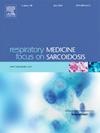Effectiveness of antifibrotic treatment in real-world patients with progressive pulmonary fibrosis
IF 3.1
3区 医学
Q2 CARDIAC & CARDIOVASCULAR SYSTEMS
引用次数: 0
Abstract
Purpose
The suitability of progressive pulmonary fibrosis (PPF) as a criterion for antifibrotic use remains uncertain. We aimed to evaluate the effectiveness of antifibrotics for patients with different criteria of progressive non-idiopathic pulmonary fibrosis interstitial lung disease (non-IPF ILD).
Material and methods
In this multicenter, retrospective cohort study, we estimated the effect of antifibrotic drugs in three cohorts of PF-ILD (progression within 24 months under standard non-antifibrotic therapy, as in the INBUILD trial), PPF (progression within 12 months based on ATS/ERS/JRS/ALAT guidelines), and PPF “despite management” (a subset of PPF with progression despite appropriate non-antifibrotic therapy). Analyses used the parametric G-formula, the time-varying Cox hazard model, and inverse probability weighting (IPW).
Results
Among 1754 patients with non-IPF ILD, 327, 567, and 326 patients were diagnosed with PF-ILD (134 antifibrotics, 193 non-antifibrotics), PPF (149 antifibrotics, 418 non-antifibrotics), and PPF “despite management” (115 antifibrotics, 211 non-antifibrotics), respectively. Using the parametric G-formula, antifibrotic therapy was associated with higher estimated survival in PF-ILD, with statistically significant differences during the first three years, and with a consistent survival advantage in the PPF “despite management” cohort. In contrast, no clear survival benefit was observed in the PPF cohort. These findings were consistent with the time-varying Cox hazard model and IPW analysis results.
Conclusion
Our results demonstrate antifibrotic therapy was associated with higher estimated survival in patients with PF-ILD in a real-world setting, suggesting the importance of including “despite management” as a criterion for antifibrotic therapy eligibility in the PPF diagnosis.
抗纤维化治疗在现实世界进行性肺纤维化患者中的有效性。
目的:进展性肺纤维化(PPF)作为抗纤维化用药标准的适用性仍不确定。我们的目的是评估抗纤维化药物对进行性非特发性肺纤维化间质性肺病(non-IPF)不同标准患者的疗效。材料和方法:在这项多中心、回顾性队列研究中,我们估计了抗纤维化药物在三个队列中的作用:PF-ILD(在标准非抗纤维化治疗下24个月内进展,如INBUILD试验)、PPF(基于ATS/ERS/JRS/ALAT指南的12个月内进展)和PPF“尽管有治疗”(PPF的一个亚组,尽管有适当的非抗纤维化治疗但仍有进展)。分析采用参数g公式、时变Cox风险模型和逆概率加权(IPW)。结果:在1754例非ipf -ILD患者中,分别有327例、567例和326例诊断为PF-ILD(抗纤维化134例,非抗纤维化193例)、PPF(抗纤维化149例,非抗纤维化418例)和PPF“尽管治疗”(抗纤维化115例,非抗纤维化211例)。使用参数g公式,抗纤维化治疗与PF-ILD中较高的估计生存率相关,在前三年具有统计学显著差异,并且在PPF“尽管治疗”队列中具有一致的生存优势。相比之下,在PPF队列中没有观察到明显的生存获益。这些发现与时变Cox风险模型和IPW分析结果一致。结论:我们的研究结果表明,在现实环境中,抗纤维化治疗与PF-ILD患者更高的估计生存率相关,这表明在PPF诊断中,将“尽管治疗”作为抗纤维化治疗资格的标准是很重要的。
本文章由计算机程序翻译,如有差异,请以英文原文为准。
求助全文
约1分钟内获得全文
求助全文
来源期刊

Respiratory medicine
医学-呼吸系统
CiteScore
7.50
自引率
0.00%
发文量
199
审稿时长
38 days
期刊介绍:
Respiratory Medicine is an internationally-renowned journal devoted to the rapid publication of clinically-relevant respiratory medicine research. It combines cutting-edge original research with state-of-the-art reviews dealing with all aspects of respiratory diseases and therapeutic interventions. Topics include adult and paediatric medicine, epidemiology, immunology and cell biology, physiology, occupational disorders, and the role of allergens and pollutants.
Respiratory Medicine is increasingly the journal of choice for publication of phased trial work, commenting on effectiveness, dosage and methods of action.
 求助内容:
求助内容: 应助结果提醒方式:
应助结果提醒方式:


